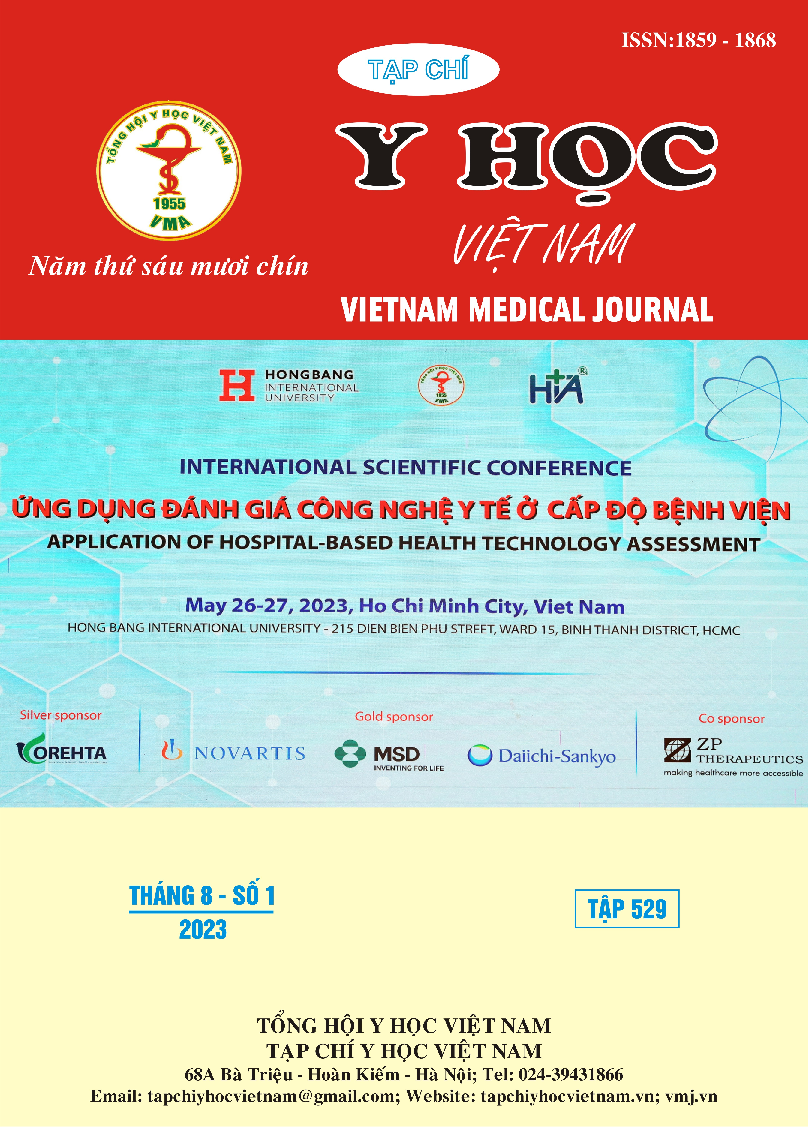HIỆU QUẢ ĐIỀU TRỊ LOÉT DẠ DÀY TÁ TRÀNG TẠI BỆNH VIỆN ĐA KHOA TỈNH TRÀ VINH
Nội dung chính của bài viết
Tóm tắt
Mục tiêu: tỷ lệ người bệnh xuất huyết tiêu hóa trong từng nhóm bệnh. Các phác đồ, thuốc ức chế bơm proton được áp dụng trong xuất huyết tiêu hóa. Kết quả điều trị loét dạ dày – tá tràng. Đối tượng và phương pháp nghiên cứu:nghiên cứu hồi cứu, từ tháng 1 năm 2020 đến hết tháng 4 năm 2020, tại Khoa Nội Tổng hợp - Bệnh viện Đa khoa tỉnh Trà Vinh. Chọn tất cả hồ sơ bệnh án, nghiên cứu tỷ lệ người bệnh xuất huyết tiêu hóa trong từng nhóm bệnh. Các phác đồ, thuốc ức chế bơm proton được áp dụng trong xuất huyết tiêu hóa trên từng hồ sơ bệnh án. Loại trừ người bệnh ngừng thuốc do lý do khác (ví dụ: phẫu thuật), chuyển viện hoặc tử vong và bỏ dỡ điều trị hoặc trốn viện. Sử dụng Microsoft Excel 2013. Kết quả: tỷ lệ xuất huyết tiêu hóa so với tổng số mắc thì loét dạ dày chiếm tỷ lệ cao nhất (84,09%), thấp nhất là viêm dạ dày và loét dạ dày chiếm 4,55%. Biến chứng xuất huyết tiêu hóa lại chiếm tỷ lệ cao lần lượt là 68,52%, 66,67%, đặc biệt là trong loét dạ dày tá tràng phối hợp có tỷ lệ xuất huyết tiêu hóa lên đến 100,00%. Phác đồ các thuốc ức chế bơm proton liều thấp (sử dụng liều 80 mg/ngày, tiêm tĩnh mạch chậm (rabeprazol 40 mg/ngày). Sau đó, uống liều 40 mg/ngày) chiếm tỷ lệ 36,36% thấp hơn so với phác đồ liều cao 63,64%. Trong phác đồ liều cao, thì truyền tĩnh mạch 8 mg/giờ (rabeprazol 4 mg/giờ) trong 72 giờ. Sau 3 ngày tiếp tục điều trị với các thuốc ức chế bơm proton, liều uống 40 mg/ngày chiếm 34,09%. Tỷ lệ sử dụng phác đồ liều cao thì truyền tĩnh mạch 8 mg/giờ (rabeprazol 4 mg/giờ) trong 72 giờ. Sau 3 ngày tiếp tục điều trị với các thuốc ức chế bơm proton, truyền tĩnh mạch 40 mg x 5 lần/ngày (rabeprazol 20mg x 5 lần/ngày), sau đó sau đó uống liều chuẩn 40 mg/ngày chiếm thấp nhất (6,82%). Trong 235, viêm loét dạ dày – tá tràng có sử dụng thuốc ức chế bơm proton, có 100,00% xuất viện đều trong tình trạng đỡ, giảm. Kết luận: Tỷ lệ xuất huyết tiêu hóa so với tổng số mắc xuất huyết tiêu hóa thì loét dạ dày chiếm tỷ lệ cao nhất (84,09%). Phác đồ liều cao, chiếm tỷ lệ sử dụng cao nhất, trong điều trị biến chứng xuất huyết tiêu hóa, do viêm loét dạ dày tá tràng (63,64%). Về kết quả điều trị thì tỷ lệ xuất viện trong tình trạng đỡ, giảm là 100%.
Chi tiết bài viết
Từ khóa
loét dạ dày - tá tràng, hiệu quả điều trị, Trà Vinh
Tài liệu tham khảo
2. Bộ môn Dược lâm sàng - Trường đại học Dược Thành phố Hồ Chí Minh (2020), Dược lâm sàng và điều trị, Nhà xuất bản Y học, tr. 12.
3. Bộ môn giải phẫu bệnh - Trường Đại học Y Hà Nội (2019), Giải phẫu bệnh học, Nhà xuất bản Y học Hà Nội, tr. 307 – 314.
4. Bộ Y tế - Bệnh viện Bạch Mai (2017), Hướng dẫn chẩn đoán và điều trị bệnh nội khoa – Cẩm nang nghiệp vụ của bác sĩ lâm sàng, Nhà xuất bản Y học.
5. Trường Đại học Y Hà Nội (2018), Bệnh học nội khoa tập 2, Nhà xuất bản Y học Hà Nội, tr. 25 – 33.
6. Valle J.D (2015), “Peptic ulcer disease and related disorders”, Harrison’s principles of internal medicine, Mc Graw Hill Education, pp. 1911 – 1921.


